Tag Archives:from the library
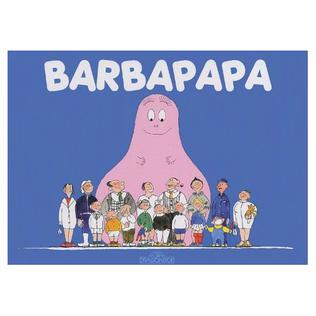
9
JulBarbapapa: My Favorite Shape-Shifter
 When I mention my favorite series of books (and corresponding television shows) from my childhood I get one of two reactions. Either people have no idea what I’m talking about, or they light up, eager to reminisce about the characters they also adored but had long since forgotten about. Those in the latter group may even burst into song, remembering the theme song from the kids’ show about the strange creature and his family, Barbapapa.
When I mention my favorite series of books (and corresponding television shows) from my childhood I get one of two reactions. Either people have no idea what I’m talking about, or they light up, eager to reminisce about the characters they also adored but had long since forgotten about. Those in the latter group may even burst into song, remembering the theme song from the kids’ show about the strange creature and his family, Barbapapa.
Partners Annette Tison and Talus Taylor created Barbapapa, a gentle and friendly shape-shifting pink blob in the 1970s. In a series of children’s books, he leads his family of creatures, called Barbapapas, as they have adventures and solve problems using their unique skill, the ability to “change their shapes and sizes very easily,” as the theme song lyrics explain. The family includes, in addition to the patriarch, his wife Barbamama, and children including the very strong Barbabravo, the musically gifted Barbalala, the animal lover Barbazoo, the bookworm Barbalib, and the artistic Barbabeau. They love to turn themselves into things like boats and planes for recreation, and into animal shapes to frolic among the wildlife, but often use their transformative powers to do good deeds and help people.
The book Barbapapa reveals that the big guy himself originated in a (human) family’s garden. The family sent him to a zoo, but he escaped, went on to rescue some folks from a burning building by transforming into a staircase, and was welcomed back with open arms. In a later story he traveled the world searching for others of his kind, only to discover that his companions were in his own back yard all along, growing in the garden as he did. In the book Barbapapa’s Ark, the colorful pear-shaped family members felt dismayed at the pollution and mistreatment of animals on earth, so they formed into a rocket ship, and escaped with a selection of creatures great and small. Humans learned their lesson and cleaned up their act in order to have the Barbapapas return, along with the animal kingdom.
Reading and watching Barbapapa stories, it becomes clear that authors Tison and Taylor were animal lovers and environmentalists. Looking for works of theirs beyond the Barbapapa series, I discovered two children’s reference books, The Big Book of Animal Records, and The Big Book of Amazing Animal Behavior. Both extremely informative books feature impressive drawings of animals more grounded in reality than the Barbapapas, but with touches of whimsy nonetheless. The duo also wrote Look Out For Ghosts, a fun storybook with glow-in-the-dark pictures.
Given how much I enjoy Tison and Taylor’s illustrations and positive messages, I’m surprised that more people don’t know about them. Over the years of talking about them I discovered that while the Barbapapas were well known in France where the authors lived, as well as other parts of Europe and even Japan, very few Americans were ever exposed to them. Lucky for me, the Barbapapa television program, a low budget animated version of the storybooks, aired in the 1970s on channel 56, in the metro Boston area. I remember watching it very early in the morning while my parents slept. I have no idea why we had it in syndication while other parts of the U.S. were deprived, but mentioning the Barbapapas tends to turn into a bonding experience with fellow Bostonians who remember them too.
Normally in the From the Library column, we librarians like to mention books that readers may want to borrow from Norwood’s library and others in the Minuteman Library Network. Unfortunately, Barbapapa and other books by Tison and Taylor cannot be located at most libraries and few remain in print in English. The Cambridge Public Library has a decent selection of them, but mostly in French. English-speakers feeling nostalgic may reacquaint themselves with the Barbapapas by visiting their official website (www.barbapapa.com/the-barbapa-family-en) or searching YouTube for videos.
As the books are hard to come by, readers will have to stick with favorites like Dr. Seuss for fantastic critters that defy the laws of physics, and Richard Scarry for adorable cartoon drawings of animals; these were also among my childhood favorites. For young readers interested in environmental stewardship and animal welfare, Carl Hiaasen’s books including Hoot, Flush, and Chomp come highly recommended. They may also enjoy the FunJungle series by Stuart Gibbs. In stories such as Panda-monium, Big Game, and Poached, Teddy Fitzroy solves mysteries and protects the inhabitants of the zoo where he lives. While the library remains closed for visitors, our Children’s department will be visiting spots in Norwood with a pop-up library! They will have book bundles ready for checkout on the spot, including selections of books on various animals. Feel free to contact the Children’s librarians about specific book requests or customized book bundles as well – see the library’s website or call for details.
Lydia Sampson is the Assistant Director at the Morrill Memorial Library in Norwood, MA. Look for her article in the July 9, 2020 issue of the Transcript and Bulletin.

3
JulClose Encounters of the Coyote Kind
 There’s no shortage of stuff to stress about these days, and so many unknowns. When will life as we know it return to normal? How much longer until we feel free to socialize within six feet? And when will our glasses stop fogging up from each masked exhale? But as with most hardships COVID-19 has its own silver lining, aside from all the amusing memes.
There’s no shortage of stuff to stress about these days, and so many unknowns. When will life as we know it return to normal? How much longer until we feel free to socialize within six feet? And when will our glasses stop fogging up from each masked exhale? But as with most hardships COVID-19 has its own silver lining, aside from all the amusing memes.
On a personal note, who could have foretold four months ago that I’d have to learn to link, pin, invite, spotlight, admit, mute, meet, host, and chat on Zoom? I’m still hopelessly challenged at technology. But if I have a prayer of making it to retirement in 2021 I know that survival requires adapting to even the most hostile of environments.
Since the library closed in mid-March I’ve been hunkering down at my home on the Cape with regular forays back to Norwood. While only 88 miles away, there’s a hint of “Wild Kingdom” here in Chatham. Due in part to the overgrown kettle pond across the street, the neighborhood is teeming with wildlife, from spring peepers, bullfrogs, possums, and otters, to bunnies, mice, raccoons, and wild turkeys. And Canis latrans, aka the eastern coyote, which has survived hostile hunters for centuries and is perhaps the most adaptable creature of all. I find this member of the canine species both fascinating and fearsome.
Coyotes now run rampant on the Cape, and everyone I know has a coyote tale to tell, except me. In the April 2016 issue of Cape Cod Life, Melissa Manderson shares several stories of coyote sightings by locals in her article, “Cape Cod is Coyote Country.” My humble wish this summer is to see just one of these so called prairie wolves myself, and I’ll move on.
The DNA of the eastern coyote, often referred to as a coywolf, is comprised of western coyote, eastern wolf, gray wolf, and even dog genes. Originally inhabiting the grasslands of the Midwest, coyotes are now found everywhere from Canada to Costa Rica. And like many of us, they’ve discovered the charms of Cape Cod.
With few natural predators other than the odd mountain lion or alligator, the coyote has displayed an impressive ability to prosper in almost any habitat, from deserts, mountains, and plains to suburbs and big cities. It’s not unusual to see them strolling down Main Street in Chatham in search of their next meal, or so I hear. Also like us, they dine on what’s in season. Feasting primarily on rodents and rabbits, they also enjoy fish, frogs, and large game, as well as berries, small pets, and the occasional leather glove.
In Native American folklore the coyote has been portrayed as a cunning outlaw and trickster. We grew up watching Wile E. Coyote’s endless schemes to take down the Roadrunner, only to be outwitted time and again. In reality, however, the wily coyote almost always prevails. Unlike the wolf, hunted to near extinction, the coyote has not only survived but thrived thanks to a killer combination of keen vision, hearing, speed, sense of smell, and sheer grit. How can you not admire such an amazing animal?
While normally not a threat to humans, coyote attacks on pets are becoming increasingly more common. In May, a coyote killed an off-leash puppy on a beach in Provincetown where a woman had recently sustained a coyote bite on her ankle. Probably the same culprit who’s giving his buddies a bad name, but still.
A few years ago my neighbor’s cat had an encounter with a coyote that didn’t end well. We heard the commotion and the next day found great clumps of feline fur strewn about the lawn. Jen, another neighbor, tells me she and her black lab see a coyote almost every other evening. She keeps Oliver on a tight leash as their uninvited companion with the pointy ears and bushy tail trails them all the way home.
As the owner of a small dog myself, why would I want to get anywhere near this much maligned predator? I’ve been warned of the dangers of letting Nicky off leash numerous times, even in my own fenced-in yard. But since everyone and their brother has experienced a coyote sighting in Chatham but me, it’s become a kind of challenge. Jen recently sent me a video her nephew took of six coyotes just hanging out on their street. Their haunting, spine-tingling howling at night sends Nick into a frenzy, but the cunning creatures continue to elude me.
My terrier is no stranger to coyotes, in Norwood anyway. This past Christmas Eve I got worried when he and my husband had been gone an unusually long time. Stepping outside to look for the car, I discovered our dog panting at the front door. Images of the faithful Lassie racing home to alert the family that Timmy had fallen in the well sprang to mind. I was grabbing my coat to go search for Brad, possibly in distress, when his text came in: “Have you seen Nick?”
During their walk Nicky had apparently sprinted for the woods, only to re-emerge running for his life, a coyote fast on his heels. Shouting and shining the flashlight in the beast’s eyes, Brad interrupted the chase as the coyote stopped and stared back at him before loping off. His intended prey, meanwhile, was nowhere in sight. Brad repeatedly called and whistled for the dog but when he heard howling in the distance he concluded the worst. Nicky probably never stopped running till he reached the safety of his doorstep. We don’t let him off the leash anymore.
If you’re curious about coyotes and want to learn more about Canis latrans from the comfort of your couch, contact the Norwood Library and we’ll gladly gather some books for curbside pickup. You’ll find a wealth of information, as well as colorful photos and captions, in Exploring the World of Coyotes, a children’s book by Tracy C. Read. In Search of the New England Coyote, by P. Anderson, contains folksy, first-hand accounts of coyotes and other creatures and is a quick read. For a more in-depth look at the “American jackal,” ask for Dan Flores’s well-researched Coyote America: a Natural and Supernatural History.
Leaving no stone unturned in my quest for related resources, I even watched the rom-com Coyote Ugly, which has absolutely nothing to do with the aforementioned mammal. And like the coyote itself, I recommend giving it a wide berth.
April Cushing is the Head of the Adult and Information Services Department at the Morrill Memorial Library in Norwood, MA. Look for her article in the July 2, 2020 issue of the Transcript & Bulletin.
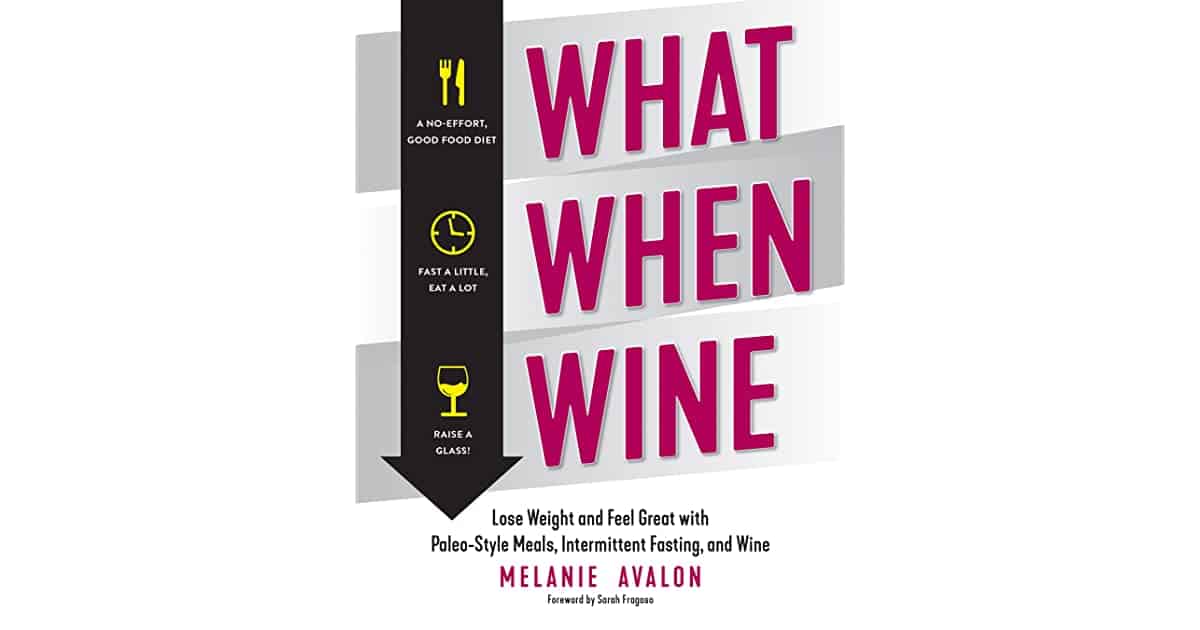
25
JunIntermittent Fasting, Part II
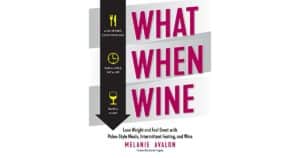 Last November, I was excited to begin my journey with IF, or Intermittent Fasting. I had read several books and articles about it and was ready to jump in. In light of this interest, it was very exciting to discover a recent study by Rafael De Cabo and Mark Mattson concerning the effects of intermittent fasting on humans, published in the December of 2019 issue of the New England Journal of Medicine. Dr. de Cabo is a senior member of staff of Gerontology at the National Institute of Aging (NIA), located in Baltimore. At this same institution, Dr. de Cabo leads the Aging, Metabolism, and Nutrition Unit. His research focuses on the use of diet to counteract the aging process. Also at the NIA, Dr. Mark Mattson is Chief of the Laboratory of Neurosciences as well as a Professor of Neuroscience at Johns Hopkins University, located in Baltimore. His work focuses on how fasting and exercise can affect as it adapts to these stressors.
Last November, I was excited to begin my journey with IF, or Intermittent Fasting. I had read several books and articles about it and was ready to jump in. In light of this interest, it was very exciting to discover a recent study by Rafael De Cabo and Mark Mattson concerning the effects of intermittent fasting on humans, published in the December of 2019 issue of the New England Journal of Medicine. Dr. de Cabo is a senior member of staff of Gerontology at the National Institute of Aging (NIA), located in Baltimore. At this same institution, Dr. de Cabo leads the Aging, Metabolism, and Nutrition Unit. His research focuses on the use of diet to counteract the aging process. Also at the NIA, Dr. Mark Mattson is Chief of the Laboratory of Neurosciences as well as a Professor of Neuroscience at Johns Hopkins University, located in Baltimore. His work focuses on how fasting and exercise can affect as it adapts to these stressors.
Their article reviews several studies that test the results of intermittent fasting on both humans and animals. The human subjects used were either healthy or considered obese, diabetic, etc. Their diets were focused on three types of intermittent fasting: alternate-day (subjects ate one day and abstained from food the next for a period of 22 days); 5:2 (subjects fasted 2 full days and ate normally the remaining 5 over a 6-month period); and daily time-restricted eating (subjects followed a daily plan in which they fasted for 16 hours and then were free to eat during the remaining 8 hours of the day, for two months. These studies were done to determine how (and if) IF “affects general health indicators and slows or reverses aging and disease processes” (2019, p.2541). I was especially interested in the idea of “intermittent fasting and metabolic switching,” as this process can and does lead to weight loss. The authors explain the cellular and metabolic responses to different types of intermittent fasting (IF), noting that each cell’s energy comes from the use of glucose and fatty acids. The body will use up the glucose first, which is produced when the pancreas releases insulin into the bloodstream to turn whatever we eat into glucose. Thus, if one keeps eating throughout the day, one will just be burning glucose. The body must come to the end of its glucose stores in order to “opt” for the fatty acids. De Cabo and Mattson found that reducing the amount of calories eaten each day will increase the ketones in the body and enable the body to metabolically “switch” from burning just glucose to burning fat. This production of ketones occurs when the body is in the fasted state, and ketones are released from the liver as a source of fuel. Together with the fatty acids, they “result in a reduced respiratory-exchange ratio… indicating the greater metabolic flexibility and efficiency of energy production.” Thus, one can burn fat more efficiently through IF.
I am now in my 7th month of Intermittent Fasting. I generally follow an 18:6 pattern, in which I fast for 18 hours and then eat within a “window” of 6 hours. When I follow the fasting protocol and eat healthy foods, I feel great and my energy level is very high. I have yet to see marked weight loss, but I feel so much better and more clear-headed. From what I have read and listened to, it can take a long time to get the body used to intermittent fasting and “training” it to burn fat. I figure that it took me 50 years to get here, so I can certainly give intermittent fasting the time it needs to repair my body. If nothing else, the energy level alone makes intermittent fasting worth it.
You can read De Cabo and Mattson’s study here: https://www.nejm.org/doi/full/10.1056/NEJMra1905136
Recommended Reading:
Delay, Don’t Deny: Living an Intermittent Fasting Life by Gin Stephens
What When Wine: Lose Weight and Feel Great with Paleo-Style Meals, Intermittent Fasting, and Wine by Melanie Avalon
Recommended Websites:
Recommended Podcasts:
intermittentfastingstories.com
Carla Howard is the Senior Circulation/Media & Marketing Assistant at the Morrill Memorial Library in Norwood, MA. L00k for her article in the June 25, 2020 issue of the Transcript and Bulletin.
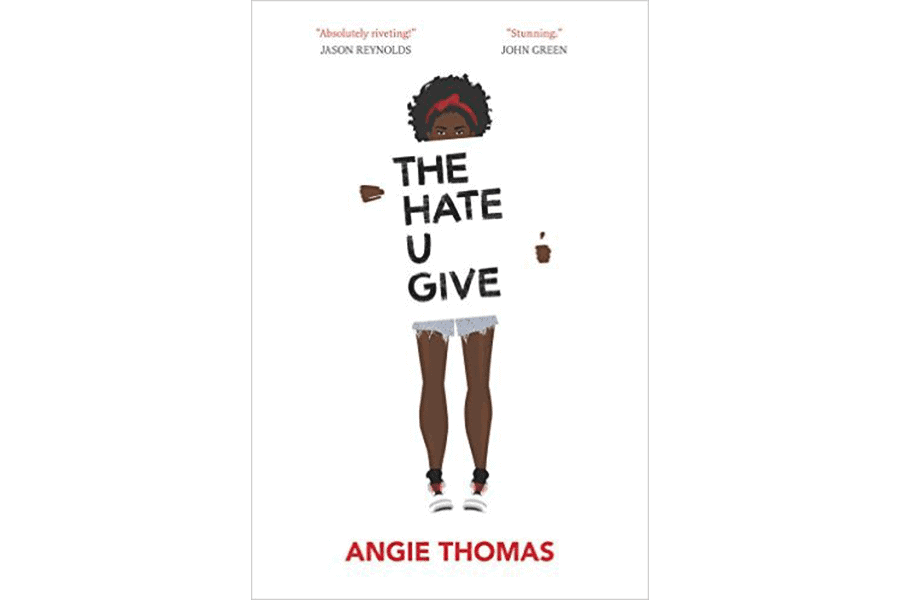
18
JunThe Importance of #OwnVoices
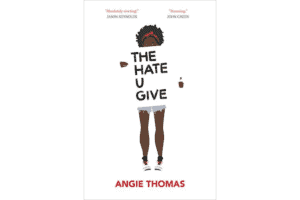 As both a librarian and someone who reads and studies a lot of books, the term “#OwnVoices” comes up a lot in conversation. One of the most recent controversies regarding #OwnVoices has been with Jeanine Cummins’ book, American Dirt. The book centers on the story of a Mexican woman who must flee gang violence with her young son after the murder of her husband, and must enter the United States as an undocumented immigrant. The controversy and conversations surrounding this book lie in the fact that Cummins herself is not of Mexican or Latinx heritage, but is a white woman. The outcry from many Latinx writers and readers, along with many other voices, is that Cummins has no place telling the story of a Mexican woman’s experience, even though, as her supporters reply, she spent a year researching Mexican life for her book. Before we can unpack why exactly there is this controversy, I think it’s important to explain what #OwnVoices is first.
As both a librarian and someone who reads and studies a lot of books, the term “#OwnVoices” comes up a lot in conversation. One of the most recent controversies regarding #OwnVoices has been with Jeanine Cummins’ book, American Dirt. The book centers on the story of a Mexican woman who must flee gang violence with her young son after the murder of her husband, and must enter the United States as an undocumented immigrant. The controversy and conversations surrounding this book lie in the fact that Cummins herself is not of Mexican or Latinx heritage, but is a white woman. The outcry from many Latinx writers and readers, along with many other voices, is that Cummins has no place telling the story of a Mexican woman’s experience, even though, as her supporters reply, she spent a year researching Mexican life for her book. Before we can unpack why exactly there is this controversy, I think it’s important to explain what #OwnVoices is first.
#OwnVoices is a term coined by author Corrine Duyvis back in 2015 on Twitter, where she wrote: “Glad important discussions are being had. Would love to be able to walk away with book recommendations. How about a hashtag? #ownvoices, to recommend kidlit about diverse characters written by authors from that same diverse group” (Duyvis 2015). This term can be applied to any form of book, not just “kidlit”, but adult novels, YA, graphic novels, comics, etc. The important theme to take away from Duyvis’s tweet is that #OwnVoices is about describing and uplifting authors from marginalized groups who are writing stories about marginalized characters within that group. For example, Angie Thomas’s The Hate U Give is an #OwnVoices novel because both Thomas and her main character, Starr Carter, are black women, but The DaVinci Code is not an #OwnVoices novel because Dan Brown and his main character are both cisgender, heterosexual, able-bodied white men (who are not marginalized in our society).
The need for movements like #OwnVoices and We Need Diverse Books is so prevalent nowadays because the publishing industry has been and continues to remain very white-centered. Take a look at the New York Times Bestseller list, or browse through the shelves at your local bookstore. The number of stories featuring white, non-marginalized authors compared to marginalized authors is a huge difference, with white, non-marginalized authors and stories continuing to dominate book shelves and bestseller lists. Or, you have authors writing the stories of marginalized groups after conducting little to no research, with the justification that, “Well, no one else is writing them, so why not me?” This is where the need for #OwnVoices comes in, because the idea that marginalized authors are simply not writing their own stories is a false one. In a 2014 Buzzfeed article entitled Diversity is Not Enough: Race, Power, Publishing, author Daniel Jose Older writes about the diversity problem in publishing, and how publishers will turn away stories written by authors of color because of reasons ranging from “people don’t buy books about characters of color” to “this story isn’t marketable.”
To come back to American Dirt, this problem in publishing is the reason why Cummins’ novel caused such an uproar. It is not simply a matter to do with Cummins not being of Mexican or Latinx heritage, but it is that her story is pitched to a publisher and gets a $1,000,000 advance, while authors who are Latinx get told their stories are not “marketable”, and therefore not publishable. By using #OwnVoices to uplift diverse authors, we send the message to the publishing industry and everyone else, for that matter, “Hey! Diverse stories and authors do exist, and they are marketable and being read!”
But what does this mean for authors? Does the existence of #OwnVoices mean that an author should only write within their identity or experience? Of course not! I believe that a writer should always strive for diversity within their work, since our world is a diverse one to begin with. Problems arise, however, when an author who writes outside of their culture or experience creates a diverse story or character, and they resort to using stereotypes or inaccuracies in their representation of those characters. Island of the Blue Dolphins, for example, is a story by Scott O’Dell, a white man, which is based on the life of Nicolena native woman Juana Maria. Although the story won a Newbery Medal and has been kept on many school reading lists, the novel has been criticized by indigenous groups for O’Dell’s stereotypical portrayals of Native Americans, along with his story being historically inaccurate. Stories like Island of the Blue Dolphins or The Indian in the Cupboard or American Dirt perpetuate negative stereotypes about marginalized folks, while still highlighting the white author.
So what can we do to uplift diverse authors and diverse stories? For authors who are writing outside of their experience: research, research, research. Ask your fellow authors or friends to read your work, and accept criticism or fact-checking about any potential inaccuracies or harmful tropes that your work falls into. For readers: seek out diverse voices. A simple web search for #ownvoices will bring up so many incredible reading lists and recommendations featuring diverse authors and diverse books. Ask your local librarians for suggestions on books that not only feature diverse characters, but that have #OwnVoices authors. I would also stress the importance of listening to conversations surrounding controversial books like American Dirt or Island of the Blue Dolphins, and examining diverse stories written by authors who do not match that diversity. Does their book contain stereotypes? Does the author rely on harmful tropes to portray their diverse characters? Do some research on the author as well, and see what research they did or what experiences they have that justify their writing of this story.
Dina Delic is the Children’s Librarian at the Morrill Memorial Library in Norwood, MA. Look for her article in the June 18, 2020 issue of the Transcript and Bulletin.
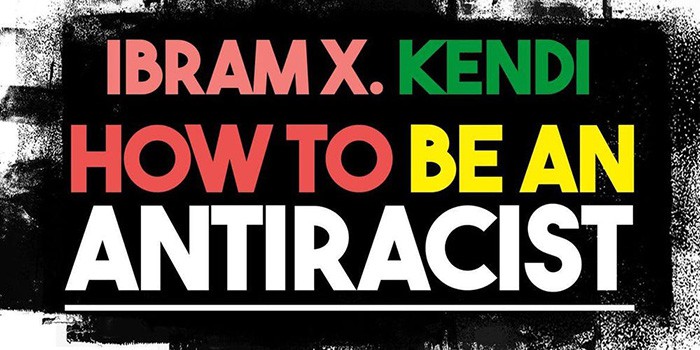
11
JunCommunity-Driven Collection Development
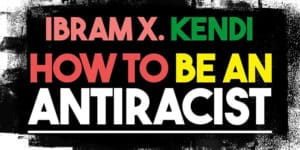 I can breathe. How terrible to think that my being able to say those three words, to describe the most basic of life’s functions, come from a place of privilege. A privilege not shared by everyone in our country, a privilege not shared by my neighbors. The recent violent murder of George Floyd by a former police officer in Minneapolis has shown that racial prejudice is still very much alive in our country, and has pushed many to a breaking point – enough is enough.
I can breathe. How terrible to think that my being able to say those three words, to describe the most basic of life’s functions, come from a place of privilege. A privilege not shared by everyone in our country, a privilege not shared by my neighbors. The recent violent murder of George Floyd by a former police officer in Minneapolis has shown that racial prejudice is still very much alive in our country, and has pushed many to a breaking point – enough is enough.
Mr. Floyd was an African American man and the officer restraining him was white. By all accounts, Mr. Floyd was not violent, was not resisting arrest, and was doing everything he could to remain calm, yet he was killed slowly and without intervention in front of a crowd of people. I am by no means an expert on police conduct, but Norwood’s own Chief Brooks put out a clear statement last week describing how the actions of all the officers involved was so wrong and how the situation could have so easily been avoided if any of them had acted as keepers of the peace and officers of the law, rather than as complicit bystanders. The Town of Norwood Facebook page reposted his statement on May 30, 2020 and I encourage you to go read it to learn more.
Many people are now taking part in protests across the country demanding justice for George Floyd, accountability for corrupt departments who have for years sheltered biased and racist officers, and an end to racism in this country. There are also many others who are confused about why this case has become the flashpoint for protests, and who simply are not aware of the racial bias and prejudice experienced everyday by other American citizens and residents.
I do not share George Floyd’s lived experience. I am protected by privilege and have not been the victim of racist acts, systemic racism, or frequent microaggressions. So this is not my time to talk. This is my time to listen. For most of us, this is our time to listen – and to hear, and to learn, and to support. As a librarian my way to help and support is to connect people with the information they want and need.
In the past week, several patrons have reached out to the Morrill Memorial Library to request materials so they can learn more about the issues dominating the headlines. They’ve offered insightful suggestions, such as additional copies of books that we already own so that groups can read and discuss the material, new titles to purchase, and lists of titles they can share with others. We’re proud to serve a community so engaged with important and difficult topics, and especially at a time when we’ve all been so preoccupied with the strain and restrictions of COVID-19. This has led to great conversations about how the library purchases materials and what we decide to purchase, and if a few people were wondering then there’s a good chance other people in our community would want to know, too.
Our library is part of the Minuteman Library Network consortium of libraries. Among many benefits, our patrons are typically able to request an item from any library in the network, and if it’s on the shelf our patron will have it in hand within a few days. Since mid-March though, all delivery between libraries has been suspended. In addition, our own library’s physical books, movies, etc. have only very recently been available through curbside hold pickup as we’ve been able to resume limited services. Any books or other materials in the Norwood library can now be reserved through the online catalog or over the phone for curbside pickup, and while this is an improvement over having no physical books at all, it is a slow trickle of information in comparison to our normal operations. We’ve been lucky that our resourceful Technical Services staff found a way to keep ordering and processing new releases even while the library was closed, but many publication dates have been delayed. Please do take advantage of the curbside service, but know that is running a little more slowly than our usual procedures.
The fastest way for us to connect our patrons with library materials at this time is through our digital resources. While physical deliveries and processing have been delayed, electronic purchase and delivery is near instantaneous. Digital collections also have the benefit of not taking up shelf space the same way that physical collections do, so the question of buying enough copies to meet demand ultimately becomes a question of budget, not of space. Please visit our website to learn more about our digital resources, but there are a couple that deserve highlighting here.
Hoopla, which I know our readers have heard about before, has ebooks, audiobooks, movies, music, and TV shows that are all completely simultaneous use with no waiting. Hoopla is a great option for book groups because every title included has unlimited copies. A quick search shows that Hoopla has several works by Dr. Martin Luther King, including an audio recording of his “I Have a Dream” speech, as well as many other works for different age groups about racism. The Norwood library does not purchase specific titles in Hoopla, but instead our patrons have access to all the content on the platform. Hoopla adds content every week, but sometimes Hoopla’s contracts with different publishers and production companies expire, so you may see some titles cycle out.
The other platform I’d like to point out is Overdrive, which you may know by their flagship app, Libby. If you’ve visited the Overdrive website recently, you’ll have noticed the banner at the top of the page promoting a curated collection of ebooks and audiobooks, Race & Racism in America. This collection has been extremely popular, and as of my writing many of the copies are checked out. Overdrive works more like a traditional library in that we purchase a certain number of copies for each title, and once those are checked out a patron can place a hold to go on the waiting list. Seeing “Waiting List” over a title and seeing long estimated wait times may be daunting, but I urge you to take the step of placing a hold. This is the most direct way to communicate to us that we should buy more copies of a title. Patron demand, i.e. holds, are the most important factor driving purchasing decisions on Overdrive.
We build our Overdrive collection through two methods: network purchases and Norwood-specific purchases. The Minuteman Library Network purchases the bulk of the Overdrive collection (Kate Tigue, Head of Youth Services, and myself are both members of this network group), and this is the collection you see when you first open the Overdrive catalog, before you’ve signed in. A very simplified explanation of how this group purchases to meet demand is that for every 10 holds placed in Minuteman, one copy is bought until a cap is reached. After that, more targeted purchases are made of the most popular titles.
Then, on behalf of the Norwood library I purchase additional copies of popular titles for our patrons. Generally speaking, and as budget allows, we purchase an additional copy for every 3-4 holds placed on a title, and these copies are only available to our patrons. After our patrons are done using the copies they go into the pool of network copies, but our patrons still get priority in the future if they place a hold. Placing holds is the best way to put a title on our radar for purchasing additional copies. Plus, if you ever come across a title that we don’t have, but should, you can “Recommend to Purchase.” Make sure you sign in as soon as you open the Overdrive website in order to see Norwood’s extra copies in addition to the Minuteman collection.
There are occasionally reasons we don’t add copies of a title, such as a publisher no longer making that title available for us to purchase, or exorbitant prices – ebooks and audiobooks sometimes cost upwards of $100 per copy – but we take title suggestions very seriously. We are your library and this is your collection. Please reach out to us with comments, questions, and suggestions by using the Contact Us form on our website, and you can even click Collection Management on that page to send suggestions for the library’s physical collection as well.
Our community inspires us to do better and to be better. Please talk to us, we’re listening.
Liz Reed is the Adult Services Librarian at the Morrill Memorial Library in Norwood, MA. Look for her article in the June 11, 2020 issue of the Transcript and Bulletin.
